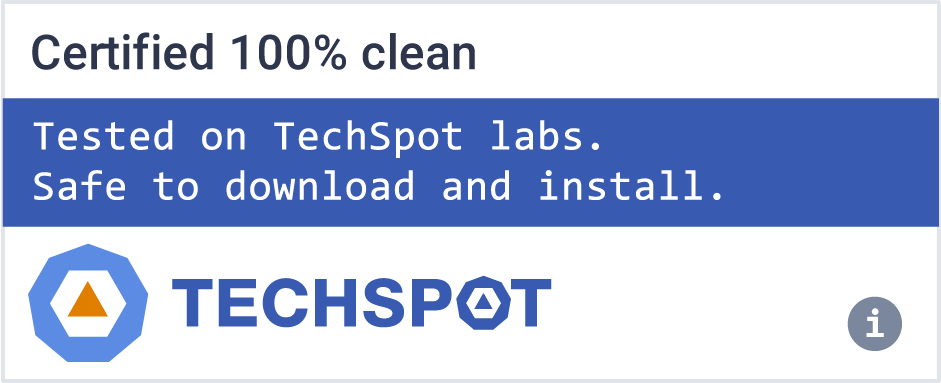Dolphin is an emulator for the Nintendo GameCube and the Nintendo Wii. It allows PC gamers to enjoy games for these two consoles in full HD (1080p) with several enhancements: compatibility with all PC controllers, turbo speed, networked multiplayer, and even more.
The Windows releases require the 64-bit Visual C++ redistributable for Visual Studio 2022 to be installed.
What games can you plan with Dolphin Emulator?
Dolphin lets you enjoy Nintendo GameCube and Wii games on PC. For a complete list of playable games, you can check out the list here.
What kind of CPU do I need to run Dolphin?
You'll need a quad-core CPU or better. With four cores, Dolphin has two cores for the main emulation threads, a third core for other tasks, and another core for the OS and background tasks.
Do I need a powerful GPU to run the Dolphin emulator?
A discrete graphics card that supports DirectX11.1 and OpenGL 4.4 is highly recommended. The more powerful the graphics card, the more pixels and enhancements you can throw at it.
- Nvidia: A GeForce GTX 1060 or better Nvidia GPU will be able to play Dolphin in HD resolutions with Ubershaders well.
- AMD: A Radeon RX 570 or better AMD GPU will perform well in Dolphin with Ubershaders. AMD generally favors D3D over OpenGL.
- Intel: Iris Pro iGPUs will handle Dolphin well in D3D in Windows. Integrated graphics older than HD 4000 are not supported.
How much RAM do I need to run Dolphin?
Dolphin requires at least 2GB of RAM. RAM speed generally has no effect on emulation performance.
Can I use two or more controllers for local multiplayer on Dolphin emulator?
Yes, if you have two or more friends connecting from the same computer, you can give a single computer multiple controllers. You only need to configure the first two ports of the Controller Configuration page.
What operating systems are supported?
Dolphin is a cross-platform emulator that runs on Windows 10 and Windows 11, Linux, macOS (10.15 Catalina and up), and Android (5.0 and above). Dolphin requires 64-bit operating systems to run properly.
What's New
On the 24th of June, 2016, Dolphin 5.0 was released. The product of a long and hard transition period, the fundamental inaccuracies that plagued Dolphin for over a decade had successfully been undone, and Dolphin was now free of its burdens to swim forward into a new era of accuracy and performance.
Eight years have passed since that great release, and we have seen the dividends of that effort time and time again. Dolphin has seen constant updates, with new features and enhancements coming side by side with bug fixes and stability improvements. Users are now able to upgrade without fear, knowing that even in the unlikely event of a bug it will be fixed within hours. And of the thousands of titles that Dolphin can run, the number that do not function can now be counted on one hand!
All of this was achieved without a new release. In fact, Dolphin has been in the 5.0 era longer than any other, and with almost twenty-two thousand commits over the past eight years, the 5.0 era now makes up over half of Dolphin's entire commit history! But users haven't forgotten our past releases. They have been waiting for years, patiently anticipating when our next release may arrive.
That wait ends today.
However, the purpose of our old stable builds is now no longer relevant to Dolphin Emulator. We no longer need a benchmark to compare against or an anchor to ground us. We have grown beyond them. So in leaving the 5.0 era behind, we are also leaving behind that release scheme and all it offered. In exchange, we're not just giving you a release today, but also a commitment to continuous releases from now on. The long drought of Dolphin releases is no more and will never happen again!
Welcome to a new era of Dolphin Emulator - the Release Era!
Announcement
We are pleased to announce that Dolphin has adopted a rolling release cycle! Building upon our highly successful "beta builds", we will have a release every few months, with a Progress Report launched alongside as a changelog. These are proper release builds however, with the full infrastructure and support that comes with them. They are tagged as releases in Git, allowing our distribution partners to properly support us and our users. Our new releases can receive hotfixes, so if any issues arises we can release small updates instead of a full on new release. And, of course, every release will advance Dolphin's version number.
However, our new releases are fundamentally different from our prior releases, so we didn't want to just add a number to our last release. As such, we are abandoning the X.0 release numbering and moving to a new date-based versioning scheme!
Accompanying this article is our first rolling release - Dolphin 2407! This release is available for download immediately, for Windows x86-64, Windows ARM64, macOS, and Android from our official website: dolphin-emu.org.
Here are the details of the new rolling release scheme:
- The first two digits are the year, and the second two are the month. 2407 codifies a release from July 2024.
- All subsequent dev builds after a release will be numbers added on to it. For example, 144 commits after 2409 would result in dev build 2409-144.
- Our next release will be 240X. Yes, it will be in just a few months from now!
- Hotfix releases will have the addition of a suffix. For example, a single hotfix to Dolphin 2409 would be "Dolphin 2409a".
- Beta builds are being replaced by releases. All users in the beta update track will be moved to the new release track.
A New Look!
To herald and symbolize this new era, we also have a new logo! MayImilae, the designer of our previous logo and long term Dolphin blog writer and contributor, has refreshed our logo for the modern day!

